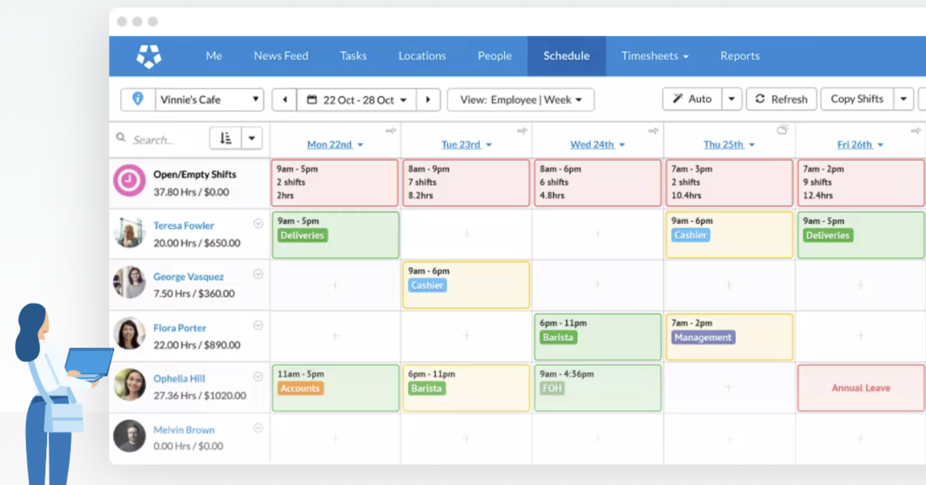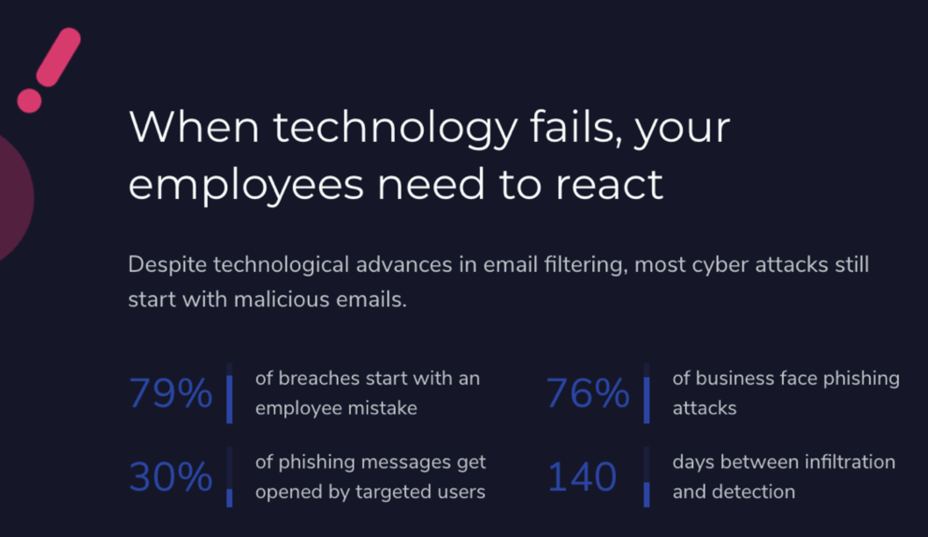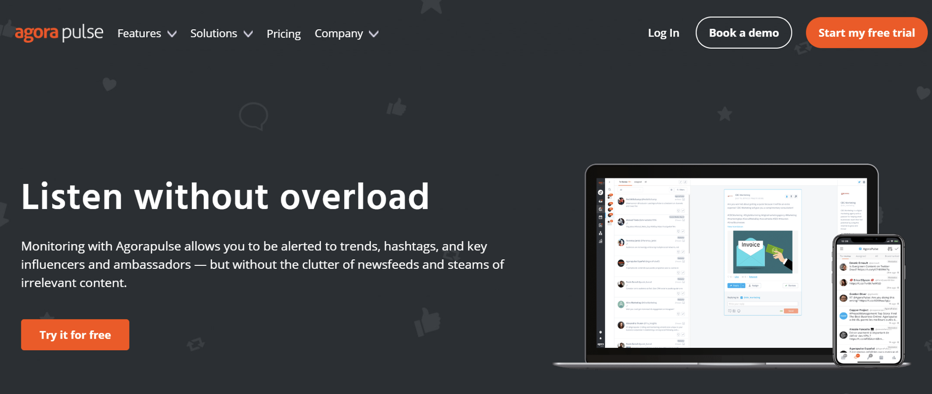All else held constant, the biggest and most important objective that most businesses have is to be as profitable or to make as much money as possible. That much is obvious. Where the challenge lies is figuring out the business objectives you should strive to achieve or work on in service of that bigger goal.
Sure, we all want to achieve big-picture goals like increase profits, ensure no one hacks our emails, or attract more qualified website visitors. But those goals are far too general to be actionable. And if you try to break them all down into multiple smaller goals, you’ll be stuck with dozens and dozens of objectives that suddenly all seem mission-critical, even though you’ll never be able to tackle them all at once – let alone this quarter.
That’s why you need to prioritize the smaller goals that have the greatest potential to make the biggest difference to your business today.
Every business is going to be a little different, of course, but what you’ll find that is that most businesses can benefit from tracking and developing the following six major objectives.
Develop Specific Customer Profiles
You can’t adequately serve your customer if you don’t really know who they are. And while you might think that you have an intuitive sense of your ideal or target customer, you really need to let the data speak for itself. Especially in this age of increased personalization and rich user data, you’d be foolish to overlook this huge opportunity.
Consider this. About three-quarters of companies say it’s cheaper to retain a customer than to acquire one in the first place. What’s more, acquiring a new customer can be up to seven times more expensive than keeping one. Even so, you’ve still got to acquire new customers in the first place. A big way to reduce your overall customer acquisition cost (CAC) is to focus your sales and marketing efforts on the customers who are not only most likely to convert but are also most likely to stay on with higher lifetime value (LTV).

Also known as a customer persona or an avatar, a customer profile describes a hypothetical individual that encapsulates a segment of your customer base. When you can picture a specific person (even if they are an amalgamation of multiple individuals), you have a much better chance at creating an effective pitch and sales funnel. Engage Bay has a useful guide on how to create a customer profile using CRM software you may already be using.
Boost Productivity With Smarter Schedules
A business is only as effective as its people. And while we could talk at length about various productivity tools that can aid with intra-office communication, minimizing distractions, and streamlined project management, you first need to get the right people together at the right time and in the right place. This is especially true for more “in-person” type work.
Ask just about any human resources department, especially in more customer-facing environments, and they’ll tell you that scheduling is one of their greatest challenges. You want to ensure that all the posts are covered at all times, but when you’ve got so many moving pieces in the air — vacation requests, sick days, changing business hours — it’s hard to keep track of it all and still create an effective, complete schedule.

But this is very much a critical business objective that needs to be met each and every day of each and every week. To this end, you might look into Deputy and its top-notch roster software in Australia. It can be used to manage multiple employees across multiple departments in multiple locations, dragging and dropping (and even auto-scheduling) shifts with just a few clicks of the mouse.
Work on Your Net Promoter Score (NPS)
It may or may not surprise you to learn that it’s not your sales and marketing team who are your brand’s biggest advocates. It’s your customers. Or at least it should be. Take a look at a company like Tesla. People who like Tesla really love Tesla, and it shows, even if the company itself does very little in terms of traditional marketing. Don’t you want to achieve the same kind of brand loyalty and advocacy?
One of the best ways to track this kind of sentiment is with Net Promoter Score (NPS). It “measures customer experience and predicts business growth.” In short, it asks customers how likely they are to recommend your company to friends and colleagues. You want to get them well into the 9/10 range if at all possible. As discussed above, a good customer relationship is mission-critical for your business, as you’d much rather retain an existing customer than have to invest in acquiring a new one.
You’ll also learn that bad experiences affect overall sentiment far more than good ones. Someone who had a mediocre experience at a restaurant probably won’t say anything. Someone who had a horrible experience, however, is probably going to tell everyone they know not to go there. And 89 percent of customers move on to a competitor following a poor customer experience.
Ensure Cybersecurity Readiness Among Employees
While you can usually align most business objectives with how they work toward increased profitability overall, it’s just as important to pay attention to all the other moving pieces. Cybersecurity is of increasing concern, for instance, especially when you’re handling so much sensitive customer data. A breach or data leak can very easily lead to a crippling crisis.

It’s true that technology has come a long way in bolstering cybersecurity. It’s also true that email filters and other technology aren’t enough; your team needs to be involved too. Indeed, nearly four-fifths of breaches start with an employee mistake. They fall for phishing messages, for example, and it could be as much as 140 days (almost five months!) before the breach is even detected!
In order to reduce the risk of a cyberattack, you have to get ahead of the cyberattackers. A great example of this is the Hoxhunt approach. As Ira Winkler points out, the Hoxhunt approach is unique in that it leverages artificial intelligence to “tailor phishing education to each individual user.”
If the employee doesn’t fall for a simulated scam, the sophistication of the next simulation increases. Conversely, a novice user who keeps failing advanced attacks can get frustrated, so the system dials them down to a more reasonable level. This kind of personalized learning experience lends itself to better readiness on the part of all employees, reducing your overall risk of a data breach.
Increase Social Media Reach and Engagement
Surely, you recognize the importance of having a strong social media presence for your brand. But, as you surely also know, simply creating a profile and throwing up the occasional meme is hardly an effective social media strategy. There needs to be more there, and this “presence” needs to translate into something a little more tangible.
Current estimates say that 3.2 billion people are on social media worldwide, and over 90 percent of millennials are on social media. If you want to reach this highly sought after demographic, you need to know what “clicks” with them. Consider that the average engagement rate on Instagram, the platform with one of the highest engagement rates overall, is less than 5 percent. You can do better. You need to do better.

And in order to better, you need to have the data and tools to back up the business decisions that you make. Several social media management tools and dashboards are available online, including Sprout Social and Agora Pulse, among others. Find the one that works best for you and your business.
Explore Subscription Opportunities for Greater LTV
You’ve developed an accurate customer profile, you’ve marketed to this key demographic, you’ve acquired the customer, and you’ve boosted their perception of your company and brand. That’s all great, but how can you extract maximum lifetime value from this customer, generating a consistent and reliable source of income that won’t fluctuate wildly with each passing season?
Many companies have moved toward subscription-based models, or variations thereof, in service of this goal. It’s not enough to sell a coffee machine, for example. Now, you get that customer coming back again and again to buy your proprietary coffee pods. It’s not enough to sell a single DVD; you get that customer to sign up for a monthly streaming service. It’s not enough to sell an exercise bike; it requires a monthly membership to enjoy the “full workout experience.” Even software like Office 365 and Adobe Creative Cloud are subscription services today.
This will vary from business to business, industry to industry, but it is very much worth your while to look into how your business can benefit from transitioning to a subscription-based offering.
Chase Down the Objectives That Matter
Consider the objectives listed above and the logic behind what makes them so effective at increasing employee performance, customer experience, asset security, and profits. It’s this kind of thinking that will allow you to prioritize the smaller goals that serve your company’s big-picture goals best.
You might or might not find that these specific objectives make sense for the situation you’re in, but hopefully, you can now go back to your priorities for the months ahead and have a fresh perspective on what you need to do.
This is a Contributor Post. Opinions expressed here are opinions of the Contributor. Influencive does not endorse or review brands mentioned; does not and cannot investigate relationships with brands, products, and people mentioned and is up to the Contributor to disclose. Contributors, amongst other accounts and articles may be professional fee-based.

